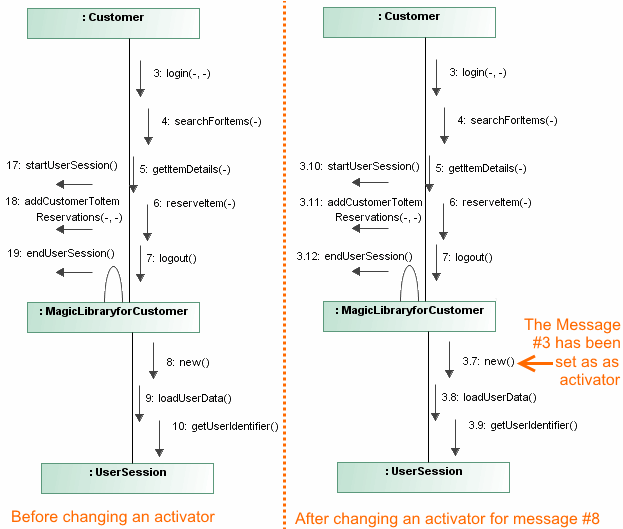The predecessor denotes the set of Messages. The completion of these Messages enables the execution of the current Message. The predecessor means that the execution of a Message is not enabled until all the communications with sequence numbers appearing in the list have occurred. Therefore, the list of predecessors represents a synchronization of threads. The Message corresponding to the numerically preceding sequence number is an implicit predecessor and does not need to be explicitly listed.
All of the sequence numbers with the same prefix form a sequence. The numerical predecessor is the one in which the final term is one less. That is, number 6.4 is the predecessor of 6.5, where the number “6” is an activator (see the example in the following figure).
To show predecessors beside the Message number
Make sure the Use Advanced Numbering is selected.
- From the Message shortcut menu, select Show Predecessors.
- In the Message Symbol Properties dialog, set Show Predecessors to true.
To change an activator number of Messages
Make sure the Use Advanced Numbering is selected.
- From the Message shortcut menu, select Activator.
Select the activator you want to assign to the selected Message. Numbering of the selected Message and subsequent Messages decreases by one level. The first level number is the number of an activator Message (see the following figure).
If you change the activator number to a predecessor Message, this number will change for subsequent predecessors.


